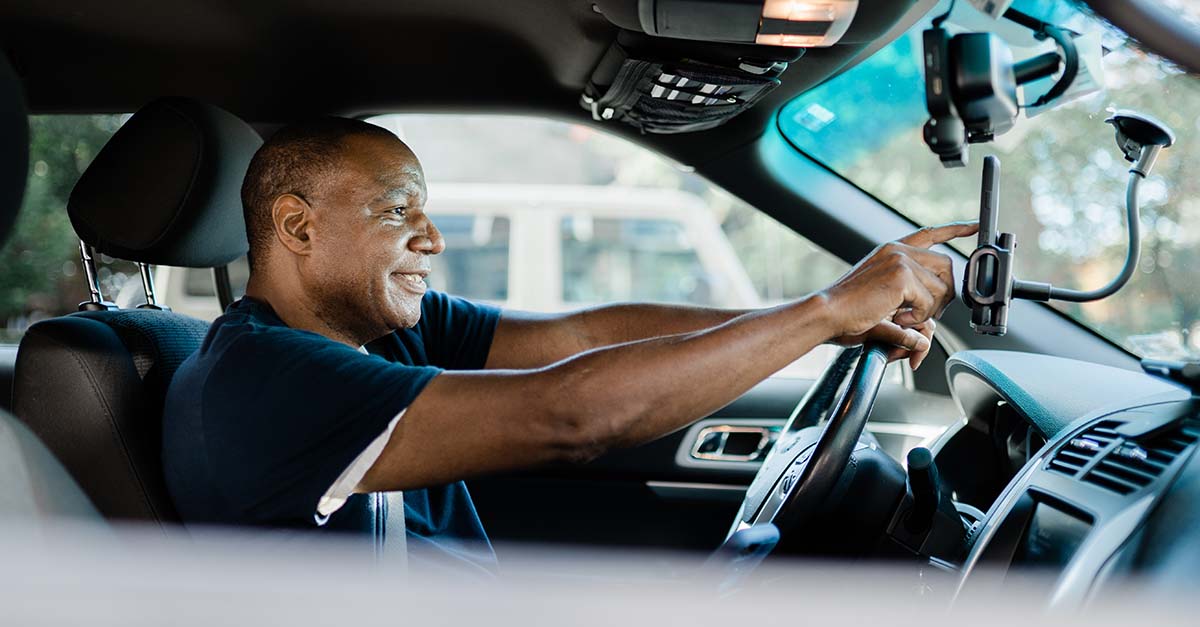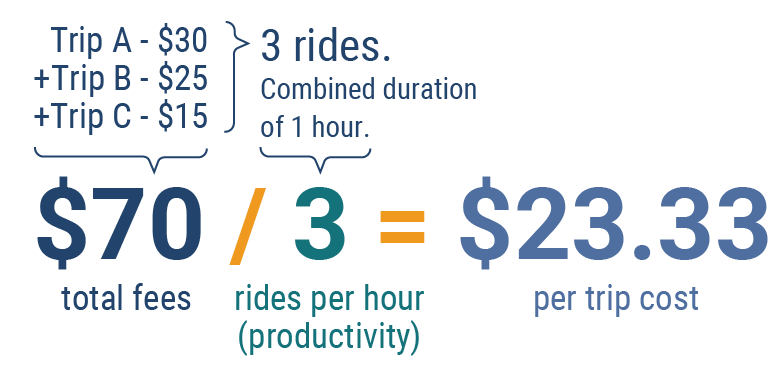
How Do You Fit an NDSP into a Revenue Hour Billing Model?
Ideally, You Don’t. Here’s Why (and One Way to Set Up Billing)
Rather than shoehorning NDSP billing into a revenue hour model – innovative agencies and transportation management companies have carved out, or set aside, a portion of the total paratransit budget appropriate for the amount and nature of the rides they want to assign to UZURV.
The revenue hour pricing model, typical for contracted paratransit service, makes a lot of sense for agencies managing the costs, and the productivity of operating a dedicated fleet of vehicles. This is the model used for most large, multi-year contracts for programs that provide hundreds of thousands to even millions of rides annually.
Grossly oversimplified: revenue hour billing essentially is the billed cost for every hour a vehicle is in service transporting riders.
For rail/subway, bus transit, and paratransit systems, the revenue hour model, paired with how many passengers are transported “productivity” in that hour, provides a reasonable measurement of the cost-effectiveness of those systems. This is a “productivity” measurement that gets to a reasonable measurement of a per ride cost.
The revenue hour pricing model, paired with productivity targets, enables contracting agencies to measure and manage its per-trip costs. One of the best ways to hit revenue hour goals in traditional paratransit (meaning dedicated fleets operated by hourly-wage drivers) is to “multi-load” as many rides as is practical without negatively affecting on-time percentage rates. That’s because the revenue hour is the same if a vehicle transports 1, 3, or 5 paratransit riders.
So for paratransit programs, one way agencies measure the cost-effectiveness of paratransit is to look at a per-trip cost.
Here’s an example:
Revenue Hour Model

A contract with a transit agency provides for $50 per revenue hour. Its fleet averages 1.3 rides per hour (productivity) – so divide the $50 per revenue hour cost by that 1.3 rides (this is a national average) and that means the system has a $38.46 per trip cost.
Now let’s look at using that model for a NDSP like UZURV, the Adaptive TNC.


UZURV bills literally per trip, and so each trip equals one ride – and for the sake of simplicity, it’s one paratransit rider per trip.
The same transit agency assigns three rides of varying lengths to UZURV. Between the three trips, the combined time it takes our drivers to complete those trips is about an hour. We then bill the following:
Trip A: $30
Trip B: $25
Trip C: $15
Our total bill to the agency or Transit Management Company (TMC) would equal $70 for an hour of active time it took our vehicles to complete the rides – yikes! Who is going to eat the $20 difference between our costs per “revenue hour” and the contracted $50 per revenue hour?!
Nobody actually will. In fact, everyone is typically saving money. And you can see why, look at our productivity – (the rides per hour – it’s 3). Take that $70 we billed and divide that by the three trips – and the literal per-trip cost (not a revenue hour divided by aggregated average productivity across a whole fleet – but the actual average cost of the three trips) – it’s $23.33.
This is a crude example, but when TransPro analyzed more than 4.6 million paratransit trips and compared our productivity and costs as compared to traditional paratransit programs it found that UZURV was 57% more productive and resulted in a 30% per trip cost savings.
How to Set-Up Billing for Non-Dedicated Service Providers
The bottom line is that the revenue hour billing model boxes out the savings inherent with high-productivity NDSP models like UZURV. Rather than shoehorning NDSP billing into a revenue hour model – innovative agencies and transportation management companies have carved out, or set aside, a portion of the total paratransit budget appropriate for the amount and nature of the rides they want to assign to UZURV. The contract is then set up with per-trip billing at the core of the negotiation.
Using a carve-out for NDSP’s fits the spirit of the revenue hour model – which is finding a predictable billing model, that incentivizes productivity, and fits the mode of service.
Let's talk about how UZURV can increase rider satisfaction and on-time performance for your ADA paratransit programs.
UZURV quickly onboards fully FTA-compliant drivers to provide a higher level of service for paratransit riders, real-time ride monitoring, and transparent reporting, all for up to 30% less per trip as compared to traditional paratransit.